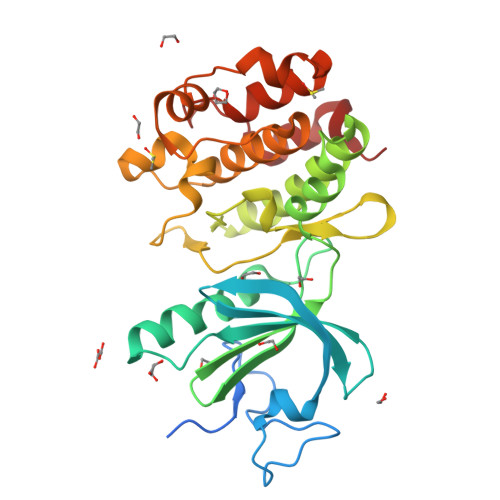| Name |
BCL2 apoptosis regulator |
protein kinase, membrane associated tyrosine/threonine 1 |
| Structure |

|

|
| GO Annotations |
Cellular Component |
|
|
| Molecular Function |
|
|
| Biological Process |
|
|
| Pathways |
|
|
| Drugs |
|
|
| Diseases |
|
None
|
| GWAS |
|
|
| Interacting Genes |
89 interacting genes:
ATP2A2
BAD
BAG1
BAG3
BAG4
BAG6
BAK1
BAX
BBC3
BCAP31
BCL2L1
BCL2L10
BCL2L11
BCL2L12
BCL2L14
BCLAF1
BECN1
BFAR
BID
BIK
BLK
BMF
BNIP1
BNIP2
BNIP3
BNIP3L
BNIPL
CAPN2
CASP3
CASP8
CDK1
CDK2
CPT1A
CYCS
FKBP8
HRAS
HRK
HSPA1A
ITM2B
ITPR1
KRAS
MAPK1
MAPK11
MAPK14
MAPK3
MAPK8
MEX3D
MOAP1
MYC
NCL
NLRP1
NMT2
NR4A1
NRAS
PARP1
PIN1
PKMYT1
PMAIP1
PML
PPARA
PPID
PPP1CA
PPP2CA
PPP2R5A
PPP3CA
PPP3CC
PRKACA
PRKCA
PSEN1
PXN
RAD9A
RAF1
RNF183
RRAS
RTN4
SEPTIN4
SF1
SIVA1
SMN1
SOD1
SPHK2
SPNS1
SQSTM1
TMBIM6
TOMM20
TP53
TP53AIP1
TP53BP2
XIAP
|
24 interacting genes:
ABHD16A
BCL2
CCNB1
CD3E
CD79A
CDK1
CLDN8
ELOVL4
FATE1
LIME1
LRRC25
MAPK10
MAPK8
PIN1
PLK1
RETREG3
SLC10A1
SLC30A8
SLC61A1
SLC71A2
STEAP3
TMEM101
TMEM229B
TMX2
|
| Entrez ID |
596 |
9088 |
| HPRD ID |
01045
|
03920
|
| Ensembl ID |
ENSG00000171791
|
ENSG00000127564
|
| Uniprot IDs |
A0A7I2V3S7
P10415
|
Q0IJ49
Q99640
|
| PDB IDs |
1G5M
1GJH
1YSW
2O21
2O22
2O2F
2W3L
2XA0
4AQ3
4IEH
4LVT
4LXD
4MAN
5AGW
5AGX
5FCG
5JSN
5VAU
5VAX
5VAY
6GL8
6IWB
6O0K
6O0L
6O0M
6O0O
6O0P
7LHB
7Y90
7YA5
8FY1
8FY2
8HLL
8HLM
8HLN
8HOG
8HOH
8HOI
8HTR
8HTS
8IQL
8U27
8VWX
8VWZ
8VXM
8VXN
|
3P1A
5VCV
5VCW
5VCX
5VCY
5VCZ
5VD0
5VD1
5VD3
8D6C
8D6D
8D6E
8D6F
8WJY
8ZTX
8ZU2
8ZUD
8ZUL
|
| GO Terms Enriched among Interactors |
|
|